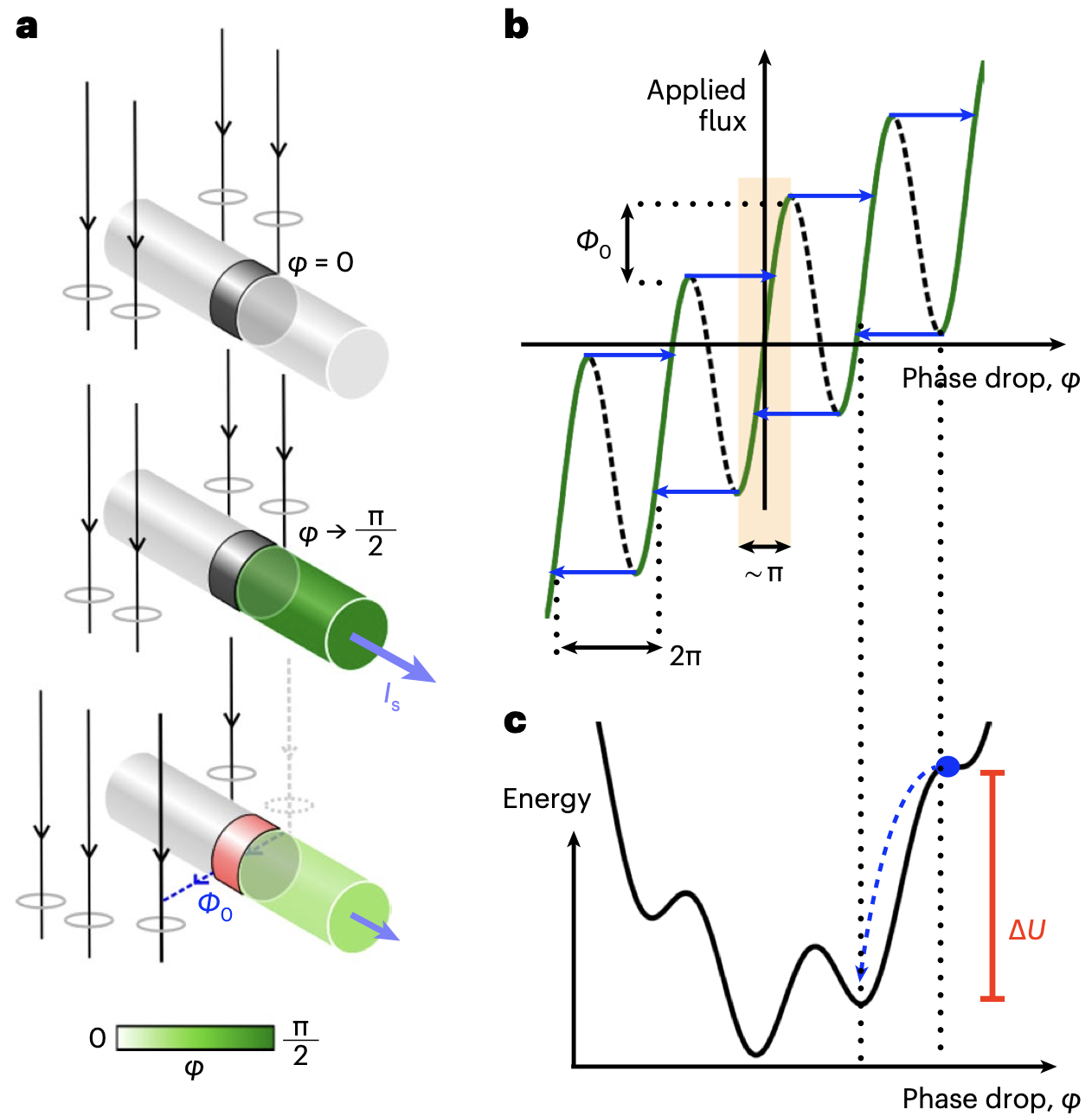
Calorimetry of a Quantum Phase Slip
Josephson junctions are a central element in superconducting quantum technology; in these devices, irreversibility arises from abrupt slips of the quantum phase difference across the junction. This phase slip is often visualized as the tunnelling of a flux quantum in the transverse direction to the superconducting weak link, which produces dissipation. Here we detect the instantaneous heat release caused by a phase slip in a Josephson junction, signalled by an abrupt increase in the local electronic temperature in the weak link and subsequent relaxation back to equilibrium. Beyond the advance in experimental quantum thermodynamics of observing heat in an elementary quantum process, our approach could allow experimentally investigating the ubiquity of dissipation in quantum devices, particularly in superconducting quantum sensors and qubits.
E. Gümüş, D. Majidi, D. Nikolić, P. Raif, B. Karimi, J. T. Peltonen, E. Scheer, J. P. Pekola, H. Courtois, W. Belzig, C. B. Winkelmann
Nat. Phys. 19, 196 (2023)
